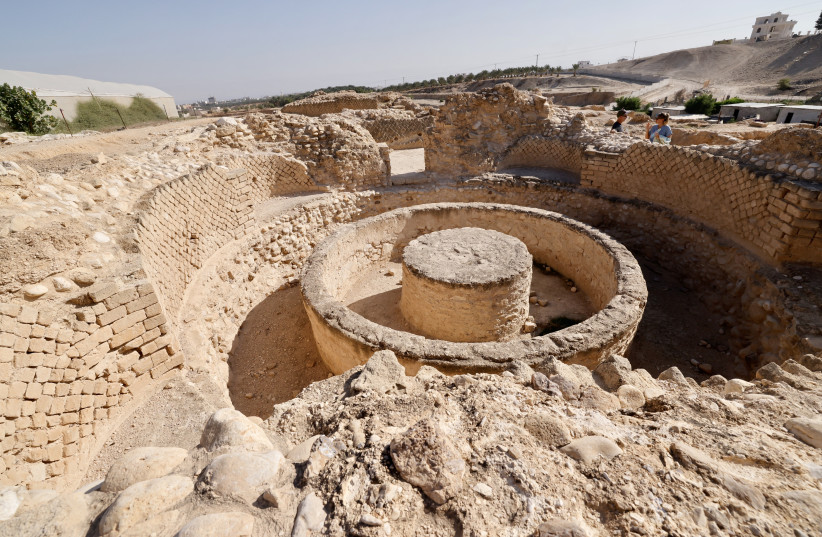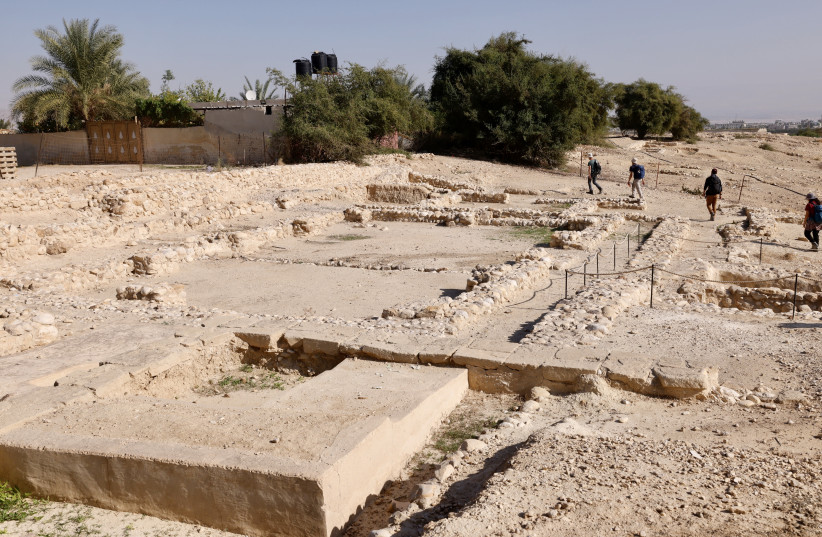The remnants of the palaces, with their ritual baths and the ancient Hashmonaim synagogue, which King Herod converted into his winter palace, are located in Area C of the West Bank.

Israeli visitors who want to walk in the footsteps of the Maccabees and see one of the remnants of their seats of power are also forced to navigate the geopolitics of the Israeli-Palestinian conflict.
That’s because the site of the palaces of the Maccabean High Priest Yohanan, also known as John Hyrcanus, and his son Alexander Jannaeus are located on the edge of the Palestinian city of Jericho.
The remnants of the palaces, with their ritual baths and the ancient Hashmonaim synagogue, which King Herod converted into his winter palace, are located in Area C of the West Bank, which is under IDF military and civilian control.
Coming and going is restricted
Israelis, as a result, have to travel about one kilometer (approximately six-10ths of a mile) through Area A, which is forbidden to them, before they can wander among the ruins, which include remnants of courtyards with pillars and the hall where King Herod’s throne was located.

At present, Israelis can only visit through organized tours that are coordinated with the army.
Foreign tourists, in contrast, can enter through Jericho to see the palaces of the ancient Jewish warriors who were at the heart of events upon which the Hanukkah holiday that began on Sunday night is based.
“We expect that the new government will turn it into a national park and open it to the general public,” said Binyamin Regional Council deputy chairman Raful Engel. The ruins are located within his council’s boundaries. The council, along with the right-wing archaeological group Shomrim Al HaNetzach, have worked to preserve the site.
One entire section of the ruins has essentially been lost because it is located in Area A, which is under the auspices of the Palestinian Authority, Engel said.
Israel has to pressure the PA to preserve the part of the site that is under its control, he said.
At the site, Moshe Goodman of Shomrim Al HaNetzach pointed to a row of small homes that ran along the edge of Area C. They essentially were built on the site, and behind them was the remnant of an additional Herodian-era palace, he said.
“History is simply being erased here,” Goodman said, adding that it ultimately robs the global community of its collective history.
“This heritage must be preserved for future generations,” he said.
To get to the site, reporters passed by a half-built structure near the site and had to work their way around a construction crane.
The miracle of Hanukkah, in which the menorah at the Temple in Jerusalem was lit for eight days with one jar of oil sufficient for only one night, is only one aspect of the overall story, Goodman said.
To solely focus on that and not the overall victory of the Hashmonaim over the Greeks and their importance in Jewish history is like celebrating the fight against the British in the 1940s without celebrating Israel’s victory in the War of Independence, he added.
Hopeful prospects for the West Bank
The Binyamin Regional Council this coming year plans to increase its campaign on behalf of the site, including holding three days of protests there on Tuesday through Thursday of this week.
The council hopes that the Religious Zionist Party’s plans to transfer aspects of Israeli civilian life in the West Bank now under the IDF’s Civil Administration to relevant ministries could help them in their battle to preserve the site by placing it under the Antiquities Authority.
Short of that, the Civil Administration could designate the site as one that is open at all times to the public, instead of just selectively, Engel said.
To improve access, it would be possible to build a pedestrian walkway of some 800 meters, with two small bridges that would skirt Area A, he said. An alternative road would also be possible but more costly, he added.
Alon Arad of the left-wing archaeological group Emek Shaveh said it was indeed impossible to have one archaeological site split between Israelis and Palestinians.
“When you cut the site into two halves, it’s unfeasible to manage it as a whole,” he said.
But the resolution is that this site, like all of Area C, should become part of a Palestinian state, he added.
Arad accused the Binyamin Regional Council of cynically using archaeology to advance Israeli sovereignty in the area, particularly by promoting a plan that would bring thousands of Israeli tourists there.
“They are trying to create an Israeli stronghold in the city of Jericho,” he said.
As reported by The Jerusalem Post
